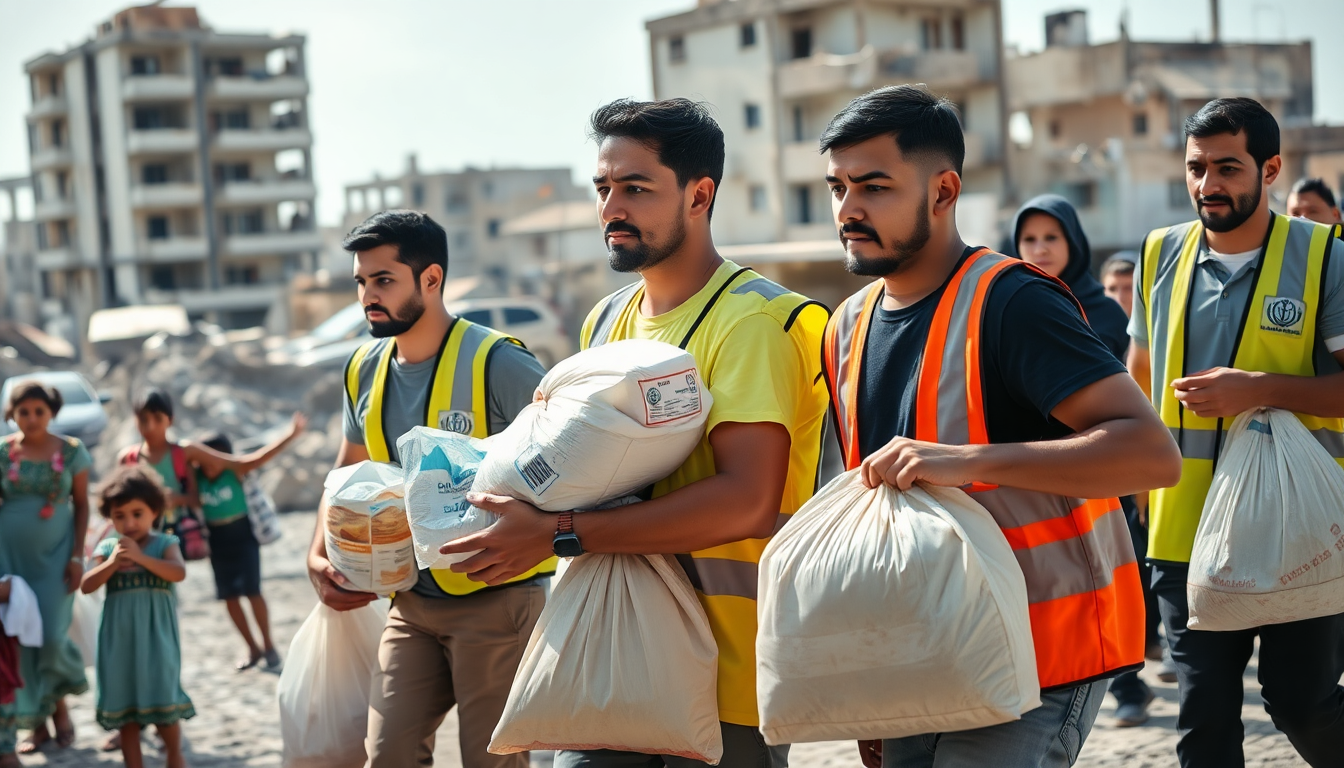Table of Contents
The humanitarian crisis in Gaza has escalated to alarming levels, sparking heated debates over the best ways to deliver aid. As various organizations compete for influence, the emergence of new models—like the Gaza Humanitarian Foundation (GHF)—has stirred controversy, particularly with established entities such as the United Nations Relief and Works Agency (UNRWA). But what does this mean for the people of Gaza? This article aims to unravel the complexities of aid delivery in this troubled region, exploring the competing narratives and their significant implications for Gazans.
The Humanitarian Landscape: An Overview
Since May, the GHF has reportedly distributed around 70 million meals to those in need in Gaza. Yet, this initiative hasn’t been without its critics. Both Hamas and a coalition of leading international NGOs have relentlessly scrutinized GHF’s efforts. Notably, UNRWA Commissioner-General Philippe Lazzarini has publicly condemned the GHF, calling it an “abomination” that only worsens suffering in Gaza. His stance is echoed by over 230 NGOs, including heavyweights like Amnesty International and Oxfam, who are advocating for a return to a U.N.-led aid model. But why is there such a divide?
The backlash against GHF highlights a broader tension in the humanitarian sector. Established organizations are grappling with the rise of alternatives that challenge their authority and methods. Proponents of GHF argue that the traditional aid framework is riddled with corruption and inefficiency, often failing to reach those who are truly in need. Gerald Steinberg, president of NGO Monitor, points out that GHF’s approach shows it’s possible to deliver aid without relying on the traditional billion-dollar aid ecosystem dominated by U.N. agencies and their affiliates. Is this the future of humanitarian aid?
Competing Models of Aid Distribution
The ongoing conflict between GHF and established NGOs raises crucial questions about the future of humanitarian assistance in Gaza. Critics of UNRWA have raised concerns about its alleged ties to Hamas, suggesting that this relationship undermines its ability to operate effectively. Furthermore, accusations have surfaced about the potential risks posed by existing aid distribution systems, with some claiming they have led to increased casualties among those seeking help. Isn’t it time for a reevaluation?
On the flip side, GHF aims to deliver aid directly to families, bypassing the entrenched networks that have historically controlled the flow of resources. This new model seems to resonate with many Gazans, who express gratitude for receiving free aid for the first time. However, operational challenges loom large, as GHF navigates a landscape filled with danger and resistance from those benefiting from the current system. Can GHF thrive in such a tumultuous environment?
As GHF expands its operations, it faces a grim reality where violence against its personnel has become all too common. The organization has already mourned the loss of staff members, underscoring the risks involved in trying to disrupt established aid distribution networks. The big question is: can GHF sustain its efforts in the face of such opposition, and will its model gain wider acceptance among the international community?
Looking Ahead: Future Prospects for Humanitarian Aid in Gaza
As the debate over the effectiveness of different aid models rages on, the future of humanitarian assistance in Gaza remains uncertain. The U.S. Agency for Infrastructure and Development has pledged financial support to GHF, which could signal a pivotal shift in how aid is delivered in the region. However, the backlash from traditional NGOs and the complex political landscape pose significant challenges to any long-term solutions. What might this mean for the people reliant on aid?
Looking ahead, it’s essential for all stakeholders to engage in constructive dialogue aimed at enhancing aid delivery mechanisms. Partnerships between innovative organizations like GHF and established entities could pave the way for a more effective response to the humanitarian crisis in Gaza. Nevertheless, the road to reform is littered with obstacles, and overcoming entrenched interests will require a united effort from both local and international players. Are we ready to work together?
In conclusion, the humanitarian aid landscape in Gaza is marked by significant tension and competing interests. As the situation evolves, it will be crucial for organizations to adapt and collaborate to ensure that aid reaches those who need it most. Ultimately, this effort could lead to a more sustainable and effective humanitarian response. Are we prepared to rise to the challenge?


